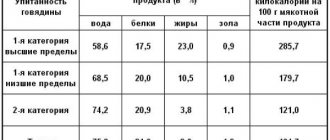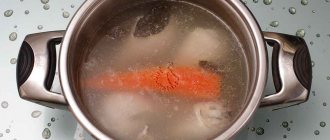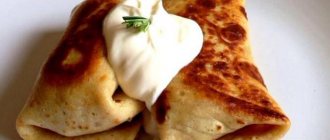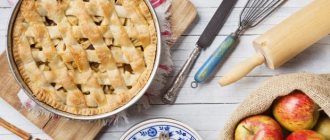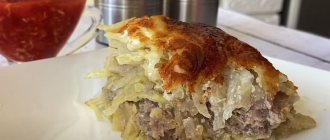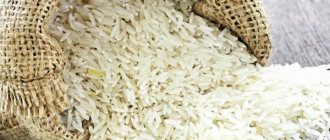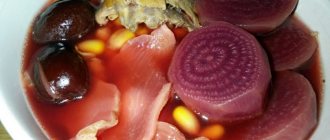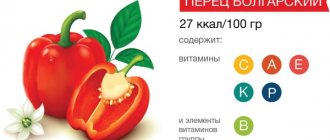About the buns:
What are the calorie content of buns, what dietary properties do they have? All this is very interesting for those who are trying to lead a healthy lifestyle and take care of their health and figure. So we will try to answer these questions in the next article.
So here it is:
Buns are baked from yeast dough. The main components of yeast dough are flour, liquid (milk, water, a mixture of milk and water or cream), yeast, salt. Depending on the type of dough, fats (butter, margarine, vegetable oil or animal fats), eggs or egg yolks, sugar, flavorings, raisins, candied fruits, etc. are added.
You can also add boiled potatoes, pumpkin, carrots or cottage cheese to the yeast dough.
Yeast mushrooms reproduce best at a temperature of 28-35 ° C, so the liquid intended for the dough is heated to 30-35 ° C, and other products are first kept in a warm room. Knead the dough, let it rise (under a napkin) and shape it in a warm room with an even temperature, without drafts.
The cutting board should also be kept in a warm room before use so that the dough does not cool down during shaping.
In the cold, yeast multiplies slowly; if the temperature is too high, they die and the dough does not rise.
Basic yeast dough recipes:
Recipe 1:
½ liter of milk or a mixture of milk and water, 25-30 g of yeast, 1 tbsp. l. sugar, 1 teaspoon of salt, 50 g of margarine or fat, 900 g of wallpaper flour or premium or 1st grade wheat flour.
Recipe 2:
½ liter of milk or a mixture of milk and water, 25-30 g of yeast, 25-100 g of sugar, 1 teaspoon of salt, 1 teaspoon of crushed cardamom, 1 egg, 50-100 g of butter or margarine, 800-900 g of flour.
Recipe 3:
½ l milk or 20% sour cream, 50-60 g yeast, 100-200 g sugar, ½ -1 teaspoon salt, ½ - 1 teaspoon chopped cardamom, grated zest of ½ lemon, 2 eggs or 3-4 egg yolks , 150-250 g butter or margarine, 1-1.1 kg flour, premium, if desired, 2 tbsp. spoons of chopped candied fruit, 100-200 g of raisins.
Almost always, buns have increased nutritional value and calorie content. This is not always a plus: anyone who fears for their figure or leads a sedentary lifestyle considers such nutritional value of buns as the main enemy of their figure. However, it is the calorie content of the bun that allows it to satisfy hunger during hard work or in conditions of an inconsistent diet.
Butter buns with sugar, cinnamon and orange zest
Products (for 7 servings)
For the test:
- Flour – 500 g
- Milk – 200 ml
- Sugar – 100 g
- Dry yeast – 7 g
- Butter – 100 g
- Eggs – 2 pcs.
- Salt – 1 pinch
*
For filling:
- Oranges (zest only) – 2 pcs.
- Sugar – 60 g
- Ground cinnamon – 2 teaspoons
- Egg yolk – 1 pc.
*
For lubrication:
- Egg – 1 pc.
Preparation
- Prepare all necessary products.
- Prepare the dough.
- Add instant yeast, a tablespoon of sugar and 100 g of flour to warm milk.
- Stir and cover with film.
- Place in a warm place to activate the yeast for about 30 minutes. The dough should increase in volume.
- When the dough rises, add melted butter, 2 eggs, salt and the remaining sugar.
- Gradually add the remaining flour, mixing with a mixer with a hook attachment until an elastic dough is obtained. It will take approximately 10 minutes to knead the dough.
- Place the dough in a warm place for about an hour.
- The dough should increase significantly in volume.
- Using a fine grater, remove the zest from the oranges.
- Mix sugar and cinnamon.
- Turn on the oven to preheat to 200°C. Divide the dough into several parts. Roll each part into a rectangle.
- Grease the dough layer with yolk, sprinkle with 2 teaspoons of cinnamon and sugar and distribute 0.5 teaspoon of orange zest on top.
- Roll the layer into a roll.
- Cut the roll in half lengthwise, leaving a couple of centimeters short of the edge.
- Next, intertwine both parts of the roll together.
- Connect the edges of the resulting dough rope with the filling.
- Form all the buns in this way.
- Place the curled buns with sugar, cinnamon and orange zest on a baking sheet, brush with egg and place in the oven for 20-25 minutes. Focus on your oven.
- Orange buns with sugar and cinnamon are ready. Bon appetit!
How many calories are in buns?
Here's how much:
Naturally, the calorie content of buns depends on the type and method of preparation.
Pay attention to this table:
Table of calorie content of buns and nutritional value (BJU) per 100 grams:
| Buns: | Bel, gr. | Fat, gr. | Angle, gr. | Cal, kcal. |
| Puff | 5.8 | 27.2 | 52.0 | 476 |
| With raisins | 7.8 | 6.6 | 67.5 | 361 |
| With apple | 6.5 | 17.0 | 67.0 | 450 |
| With jam | 4.4 | 8.7 | 51.0 | 295 |
| With cottage cheese | 11.3 | 11.4 | 42.0 | 320 |
| With sugar | 6.4 | 12.6 | 41.0 | 258 |
| With poppy seeds | 7.6 | 11.3 | 53.0 | 347 |
| With cinnamon synabon | 4.5 | 14.3 | 56.0 | 361 |
| For tea | 7.2 | 6.2 | 51.0 | 317 |
| Calorie | 7.3 | 9.6 | 62.4 | 363 |
| Otrubnaya | 7.8 | 1.8 | 43.9 | 220 |
| Stolichnaya | 8.4 | 2.2 | 52.8 | 270 |
| 8 cereals | 13.9 | 5.3 | 43.7 | 277 |
| With sesame | 9.6 | 4.2 | 59.5 | 320 |
The buns are different - rich, yeasty and sweet!
We often add poppy seeds to both pies and buns. How many calories are in a bun with poppy seeds? A one hundred gram serving of such baked goods will contain approximately three hundred and ten kilocalories. As for fats, there will be 8.4 g of them in such a bun, 12.5 g of proteins, and 61.3 g of carbohydrates.
On a note! Any bun “gives” us not only extra pounds, but also useful components. However, the downside of baking is empty carbohydrates, which lead to weight gain.
The calorie content of baked goods depends on the base on which it is prepared and on the filling. How many calories are in a bun with jam? Such baked goods bring us two hundred and ninety-five kilocalories. And if the pastry is with raisins, it will have two hundred and ninety kilocalories. The calorie content of filled buns is lower than that of plain buns because they require less dough.
Many buns are sprinkled with granulated sugar or cinnamon powder. How many calories are in a bun with sugar? The calorie content of such baked goods is three hundred thirty-nine kilocalories per one hundred gram serving. How many calories are in a cinnamon roll? It will contain three hundred and forty-seven kilocalories.
On a note! Cinnamon is rich in vitamin components of various groups, as well as minerals. Since it is slightly bitter, granulated sugar is added to baked goods along with it.
Now let's look at the energy value of the most common types of buns. So, bran buns are a real salvation for the diet menu. One hundred grams of such a treat contains two hundred and twenty kilocalories. How many calories are in a bun? This delicacy includes buns with granulated sugar, as well as pastries with a puff base. The butter dough contains a considerable amount of eggs, milk, and butter. Accordingly, baked goods based on it will be quite high in calories - three hundred thirty-nine kilocalories.
For sandwiches and sandwiches, many people choose “Capital” buns. A one hundred gram serving of such baked goods contains two hundred and seventy kilocalories. However, if the bun is supplemented with jam, honey or cheese, its calorie content will be higher.
On a note! By eating one Stolichnaya bun for lunch, you will get your daily requirement of iron.
Many adherents of a healthy menu cannot do without 8-grain buns. These baked goods are prepared using eight types of flour and grains. Its calorie content is two hundred seventy-seven kilocalories per hundred grams.
Gourmets love Burgundy buns. The custard base, complemented with cheese, gives the baked goods creamy notes and airiness. Its one hundred gram serving will contain two hundred and twenty-six kilocalories.
No less popular are the “Sandwich” buns with sesame seeds. Their energy value is three hundred twenty kilocalories. But hamburger buns contain two hundred and seventy-two kilocalories. The most high-calorie buns from this “series” will be buns intended for hot dogs. They contain three hundred thirty-three kilocalories.
As already mentioned, the calorie content of any baked product is associated with the components added to it. If you supplement the buns with jam, be prepared for the fact that their calorie content will be two hundred and ninety-six kilocalories. Baking with cottage cheese will bring you three hundred twenty-three kilocalories.
Glazed buns contain two hundred and fifty-six kilocalories, and with chocolate – three hundred and thirty-one. A muffin with condensed milk brings us three hundred and fifteen kilocalories, with apple filling – two hundred and twenty. And baked goods with fudge contain two hundred and sixty-three kilocalories.
On a note! Different manufacturers may have different calorie content for the same products.
How is calorie content formed?
The calorie content of a dish is calculated very simply. It is known that all products contain proteins, fats and carbohydrates. One gram of proteins and carbohydrates contains 4 kilocalories each, and a gram of fat contains 9. By multiplying the values for a particular dish by the calorie coefficient, and then summing the three resulting numbers, you can get the result.
It is important to note that calorie content is not the only indicator of the dietary content of a product. Two or three apples, the total calorie content of which will be 150-200 kilocalories, are not identical to the same amount of calories obtained from a dessert with cream.
Recipe for buns made from yeast dough. Calorie, chemical composition and nutritional value.
Nutritional value and chemical composition of “Yeast dough buns”.
The table shows the nutritional content (calories, proteins, fats, carbohydrates, vitamins and minerals) per 100 grams of edible portion.
| Nutrient | Quantity | Norm** | % of the norm in 100 g | % of the norm in 100 kcal | 100% normal |
| Calorie content | 345.7 kcal | 1684 kcal | 20.5% | 5.9% | 487 g |
| Squirrels | 7.4 g | 76 g | 9.7% | 2.8% | 1027 g |
| Fats | 8.1 g | 56 g | 14.5% | 4.2% | 691 g |
| Carbohydrates | 60.2 g | 219 g | 27.5% | 8% | 364 g |
| Alimentary fiber | 3.1 g | 20 g | 15.5% | 4.5% | 645 g |
| Water | 25.9 g | 2273 g | 1.1% | 0.3% | 8776 g |
| Ash | 1.19 g | ~ | |||
| Vitamins | |||||
| Vitamin A, RE | 22.1 mcg | 900 mcg | 2.5% | 0.7% | 4072 g |
| Retinol | 0.019 mg | ~ | |||
| alpha carotene | 0.024 mcg | ~ | |||
| beta carotene | 0.01 mg | 5 mg | 0.2% | 0.1% | 50000 g |
| beta Cryptoxanthin | 3.032 mcg | ~ | |||
| Lycopene | 0.353 mcg | ~ | |||
| Lutein + Zeaxanthin | 5.217 mcg | ~ | |||
| Vitamin B1, thiamine | 0.089 mg | 1.5 mg | 5.9% | 1.7% | 1685 g |
| Vitamin B2, riboflavin | 0.08 mg | 1.8 mg | 4.4% | 1.3% | 2250 g |
| Vitamin B4, choline | 49 mg | 500 mg | 9.8% | 2.8% | 1020 g |
| Vitamin B5, pantothenic | 0.373 mg | 5 mg | 7.5% | 2.2% | 1340 g |
| Vitamin B6, pyridoxine | 0.124 mg | 2 mg | 6.2% | 1.8% | 1613 g |
| Vitamin B9, folates | 21.512 mcg | 400 mcg | 5.4% | 1.6% | 1859 |
| Vitamin B12, cobalamin | 0.123 mcg | 3 mcg | 4.1% | 1.2% | 2439 g |
| Vitamin C, ascorbic acid | 0.24 mg | 90 mg | 0.3% | 0.1% | 37500 g |
| Vitamin D, calciferol | 0.133 mcg | 10 mcg | 1.3% | 0.4% | 7519 g |
| Vitamin E, alpha tocopherol, TE | 3.601 mg | 15 mg | 24% | 6.9% | 417 g |
| gamma tocopherol | 0.245 mg | ~ | |||
| delta tocopherol | 0.006 mg | ~ | |||
| Vitamin H, biotin | 3.243 mcg | 50 mcg | 6.5% | 1.9% | 1542 g |
| Vitamin K, phylloquinone | 0.7 mcg | 120 mcg | 0.6% | 0.2% | 17143 g |
| Vitamin RR, NE | 2.1264 mg | 20 mg | 10.6% | 3.1% | 941 g |
| Niacin | 0.74 mg | ~ | |||
| Betaine | 0.092 mg | ~ | |||
| Macronutrients | |||||
| Potassium, K | 120.33 mg | 2500 mg | 4.8% | 1.4% | 2078 g |
| Calcium, Ca | 64.94 mg | 1000 mg | 6.5% | 1.9% | 1540 g |
| Silicon, Si | 2.256 mg | 30 mg | 7.5% | 2.2% | 1330 g |
| Magnesium, Mg | 14.25 mg | 400 mg | 3.6% | 1% | 2807 g |
| Sodium, Na | 247.66 mg | 1300 mg | 19.1% | 5.5% | 525 g |
| Sera, S | 57.08 mg | 1000 mg | 5.7% | 1.6% | 1752 g |
| Phosphorus, P | 82 mg | 800 mg | 10.3% | 3% | 976 g |
| Chlorine, Cl | 396.49 mg | 2300 mg | 17.2% | 5% | 580 g |
| Microelements | |||||
| Aluminium, Al | 604 mcg | ~ | |||
| Bor, B | 20.9 mcg | ~ | |||
| Vanadium, V | 50.76 mcg | ~ | |||
| Iron, Fe | 1.118 mg | 18 mg | 6.2% | 1.8% | 1610 g |
| Yod, I | 4.1 mcg | 150 mcg | 2.7% | 0.8% | 3659 g |
| Cobalt, Co | 1.731 mcg | 10 mcg | 17.3% | 5% | 578 g |
| Manganese, Mn | 0.7718 mg | 2 mg | 38.6% | 11.2% | 259 g |
| Copper, Cu | 76 mcg | 1000 mcg | 7.6% | 2.2% | 1316 g |
| Molybdenum, Mo | 9.269 mcg | 70 mcg | 13.2% | 3.8% | 755 g |
| Nickel, Ni | 1.241 mcg | ~ | |||
| Tin, Sn | 5.99 mcg | ~ | |||
| Selenium, Se | 5.678 mcg | 55 mcg | 10.3% | 3% | 969 g |
| Strontium, Sr | 4 mcg | ~ | |||
| Titanium, Ti | 6.2 mcg | ~ | |||
| Fluorine, F | 20.15 mcg | 4000 mcg | 0.5% | 0.1% | 19851 |
| Chromium, Cr | 1.93 mcg | 50 mcg | 3.9% | 1.1% | 2591 g |
| Zinc, Zn | 0.6068 mg | 12 mg | 5.1% | 1.5% | 1978 |
| Digestible carbohydrates | |||||
| Starch and dextrins | 36.764 g | ~ | |||
| Mono- and disaccharides (sugars) | 22.9 g | max 100 g | |||
| Glucose (dextrose) | 0.024 g | ~ | |||
| Fructose | 0.026 g | ~ | |||
| Essential amino acids | |||||
| Arginine* | 0.052 g | ~ | |||
| Valin | 0.054 g | ~ | |||
| Histidine* | 0.024 g | ~ | |||
| Isoleucine | 0.043 g | ~ | |||
| Leucine | 0.073 g | ~ | |||
| Lysine | 0.063 g | ~ | |||
| Methionine | 0.027 g | ~ | |||
| Methionine + Cysteine | 0.043 g | ~ | |||
| Threonine | 0.042 g | ~ | |||
| Tryptophan | 0.014 g | ~ | |||
| Phenylalanine | 0.043 g | ~ | |||
| Phenylalanine+Tyrosine | 0.072 g | ~ | |||
| Nonessential amino acids | |||||
| Alanin | 0.046 g | ~ | |||
| Aspartic acid | 0.084 g | ~ | |||
| Glycine | 0.032 g | ~ | |||
| Glutamic acid | 0.119 g | ~ | |||
| Proline | 0.036 g | ~ | |||
| Serin | 0.061 g | ~ | |||
| Tyrosine | 0.035 g | ~ | |||
| Cysteine | 0.018 g | ~ | |||
| Sterols (sterols) | |||||
| Cholesterol | 35.97 mg | max 300 mg | |||
| Phytosterols | 0.611 mg | ~ | |||
| beta sitosterol | 11.986 mg | ~ | |||
| Saturated fatty acids | |||||
| Saturated fatty acids | 1.5 g | max 18.7 g | |||
| 14:0 Miristinovaya | 0.003 g | ~ | |||
| 15:0 Pentadecane | 0.001 g | ~ | |||
| 16:0 Palmitinaya | 0.49 g | ~ | |||
| 17:0 Margarine | 0.005 g | ~ | |||
| 18:0 Stearic | 0.297 g | ~ | |||
| 20:0 Arakhinovaya | 0.02 g | ~ | |||
| 22:0 Begenovaya | 0.042 g | ~ | |||
| Monounsaturated fatty acids | 1.715 g | min 16.8 g | 10.2% | 3% | |
| 16:1 Palmitoleic | 0.024 g | ~ | |||
| 17:1 Heptadecene | 0.001 g | ~ | |||
| 18:1 Oleic (omega-9) | 1.658 g | ~ | |||
| 18:1 cis | 0.006 g | ~ | |||
| 20:1 Gadoleic (omega-9) | 0.002 g | ~ | |||
| Polyunsaturated fatty acids | 3.658 g | from 11.2 to 20.6 g | 32.7% | 9.5% | |
| 18:2 Linolevaya | 3.648 g | ~ | |||
| 18:3 Linolenic | 0.004 g | ~ | |||
| 20:4 Arachidonic | 0.006 g | ~ | |||
| Omega-6 fatty acids | 0.1 g | from 4.7 to 16.8 g | 2.1% | 0.6% |
The energy value of a bun made from yeast dough is 345.7 kcal.
Primary Source: Created in the application by the user. Read more.
** This table shows the average levels of vitamins and minerals for an adult. If you want to know the norms taking into account your gender, age and other factors, then use the “My Healthy Diet” application.
